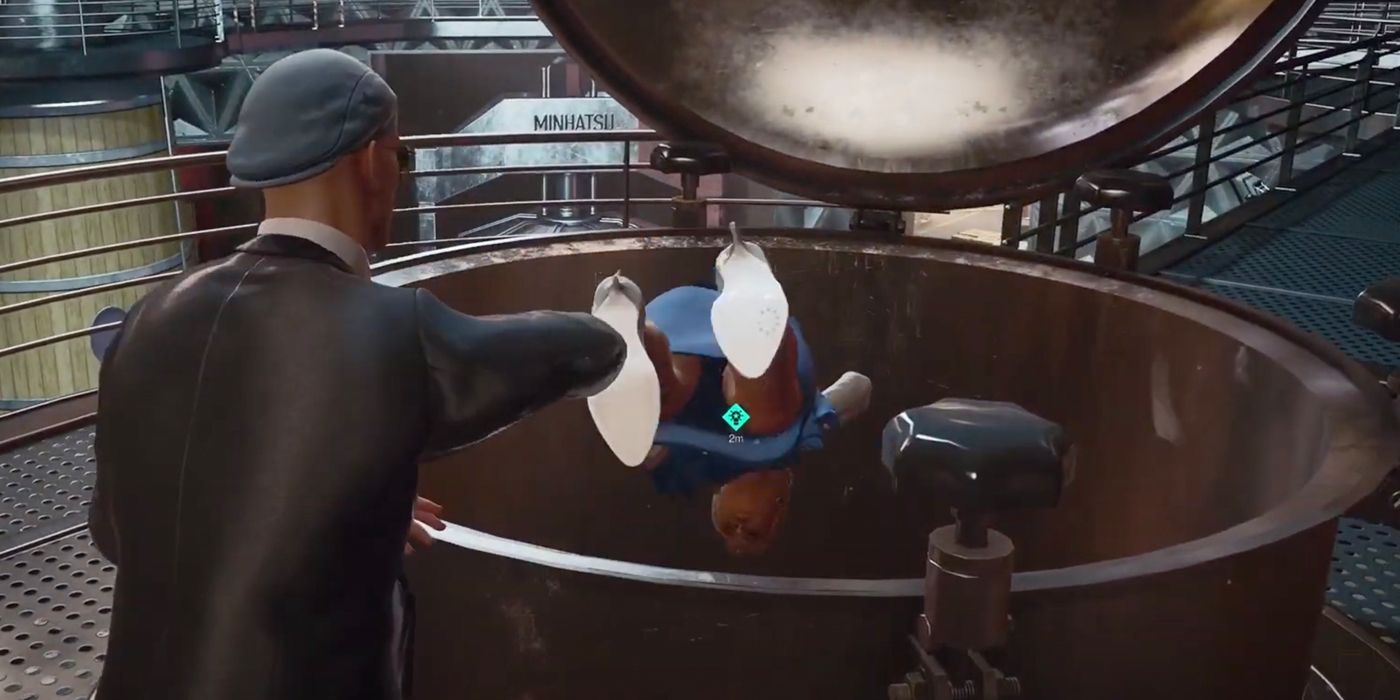Like all games in the Hitman franchise, Hitman 3 gives Agent 47 near-unlimited ways to kill targets, but it’s just as important for 47 to dispose of the evidence afterwards. Hiding bodies from guards is one of the core gameplay mechanics in the Hitman series, but this doesn’t apply to blood stains. While 47 can hide any body he needs to, Hitman 3 treats blood stains like they’re not even there.
To be fair, Hitman games have never been about realism. Since Hitman: Codename 47, Agent 47 has had the ability to wear nearly any outfit in Hitman possible and fool most of the guards in the game. NPCs didn’t originally notice 47 in mirrors, not even when he snuck up behind them with a visible weapon. 47 can cause utter mayhem throughout a level, but if he hides long enough the guards will eventually just go back to normal. Some of these unrealistic touches have become a signature of the Hitman franchise, and many fans couldn’t imagine the games without them.
Even so, it seems inconsistent to ignore blood stains as a gameplay mechanic entirely. Like all games in the Hitman series, Hitman 3 encourages stealth and rewards the player for getting the job done unnoticed. The game awards points every time 47 conceals a body, and completing a level without raising the alarm grants the coveted “Silent Assassin” rating, which helps unlock better Hitman weapons and gear. Leaving a big bloody mess is about the worst thing imaginable for a professional like 47, but the reason developer and publisher IO Interactive didn’t let 47 clean up blood stains is most likely because it would have over-complicated the game.
In The World Of Assassination, Blood Stains Are Just Decorations

Agent 47 has never had a way to clean up blood stains. But NPCs ignoring blood stains is a relatively new gameplay mechanic, which was first used in Hitman 1 in 2016. Before that, an NPC discovering a blood stain would prompt them to raise the alarm and look for the culprit. In Hitman: Blood Money in 2006, dragging a bloody body would create a blood trail that guards would also discover, but this feature was dropped for Hitman: Absolution in 2012. Because 47 has never been able to remove blood stains, making a bloody kill used to be a risky move – until Hitman 1.
Hitman: Blood Money and Hitman: Absolution were the last two games in the franchise that allowed NPCs to react to blood stains. They were also the first games to introduce body disposal containers, with Blood Money making them available occasionally and Absolution perfecting the concept and making them universal. From Absolution onwards, body disposal containers have allowed 47 to hide a body for the entirety of the mission. NPCs will never discover bodies hidden in these containers, not even when actively searching for them.
Most importantly, body disposal containers work on both unconscious and dead enemies, making them a one-size-fits-all way for 47 to get rid of the evidence. If IO Interactive had kept blood stains discoverable in Hitman 1, it would have defeated the purpose of the disposable body containers, since 47 could hide a bloody body but still leave an incriminating blood stain behind. In theory, IO could have added a second gameplay mechanic that allowed 47 to clean up blood stains, but that would have made body disposal even more complicated than it already is, and it would have been yet another way to punish players who rack up high body counts. In the end, the simplest answer was to make blood invisible to enemies, like it is in Hitman 3.





